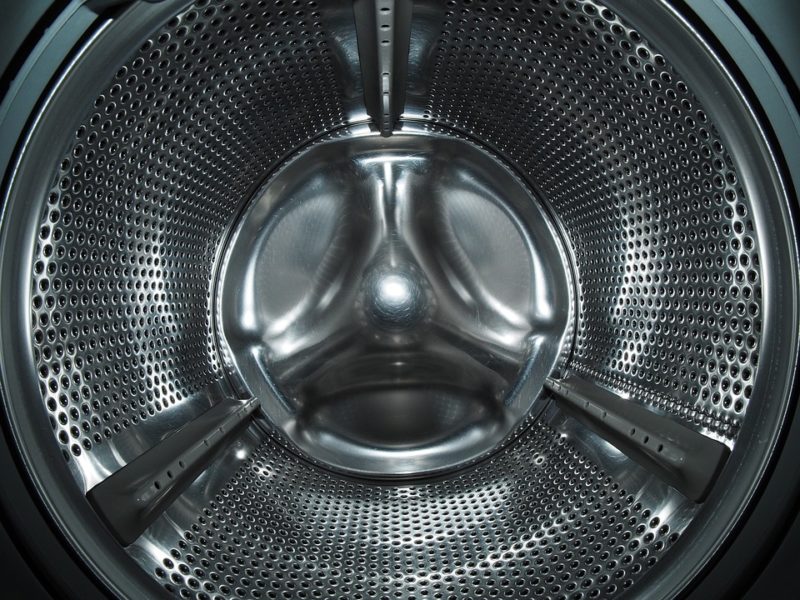Are you searching for how to fix a washer that wont spin? Various warning indicators will appear if you have an issue with your wash cycle. Give heed to how your washing machine rotates (or doesn’t, depending on the situation).
It might be as easy as placing different combinations of garments in the drum or cleaning critical portions of your machine to solve the problem.
You’ve completed the washing cycle, but your garments are always damp and filthy. It’s possible they weren’t even cleaned properly. Does this ring a bell? Then there’s a good chance your washer isn’t spinning correctly. To fix why your washing machine isn’t spinning, you must first understand why it isn’t turning. However, if you were interested in learning how to fix a washer that is not spinning correctly, just delve further into this article!
Ways To Fix A Washer That Won’t Spin
Are you frustrated with how to fix a washer that wont spin? Then don’t worry, here are some tricks:
#1. Distribute unbalanced laundry
This usually happens when washing large, heavy items, such as duvets or thick coats. In addition, some newer washers fail to reach high speeds with unbalanced loads, which causes fabrics to get wet. If you suspect a delivery problem, try rearranging the wet laundry accumulated in the squeeze and restarting the spin cycle.
#2. Leveling the wrong pad
The washer will not spin appropriately if it is not placed evenly on the adjustable base. Look for other signs of machine asymmetry, excessive noise, and vibrations during the wash. Adjust each leg up or down separately until the laundry is perfectly level if they confirm your suspicions.
#3. Check the power supply
Although it may seem obvious, double-check that the washer is plugged in. Bumps or bounces during the cycle may cause the plug to come out of the outlet and reconnect to the company behind you. If the power cord is connected to an outlet, check the house circuit board to prevent the circuit breaker from tripping. Know the power consumption of washing machine.
#4. Stop using extension cords
Your washing machine’s heavy-duty power cord should be plugged directly into the outlet, not an extension cord. Many extension cord washers do not conduct enough power to run the engine, and the engine may overheat and shut itself down. After the engine has cooled, the gasket may work again, but the problem will reappear. In addition, relying on extension cords can shorten the life of your washer. If you cannot move the washer closer to the outlet, connect a new outlet within a reasonable distance.
#5. Check the rotary switch
In top-loading washers, a small protrusion on the bottom of the lid presses a switch when the top is closed as a safety measure to detect if the lid is closed. However, if the protrusion is bent, it may not activate the switch as intended. If the machine starts spinning correctly, bend the tab again to activate the spin switch properly. Refer to the instructions in the user’s manual.
#6. Stick to high-performance detergents for front-loading washing machines
You may not realize it, but most front-loading washers require a low foaming effect high performance (HE) detergent. Otherwise, detergents other than HE may generate so much interest that the sensors in the machine will determine that the washer is too full. As a result, the washer will not reach sufficient spin speed; your clothes will be wet at the end of the cycle. My friends, why not try reading about how to use laundry pods in front load washer.
#7. Unscrew every hole in the hose
This will block the flow of water in and out of the washer, which will cause the washer to start the spin cycle, but it will never speed up or drain. Instead, pull the washer apart to look at the back and check for kinks, then carefully push the machine back into place to avoid accidentally messing up the hose. I guess you should also read about how to clean washer drain hoses.
#8. Find obstructions in the drainage system
Small items such as coins, keys, buttons, or clothespins can fall out of pockets and clothing and attach themselves to the washer’s hose leading to the drain pump. After all, a clogged drain prevents the machine from turning. On some washing machines, there is no need to remove the back of the washer to access the drain pump (usually at the back of the washer, near the floor). However, on other models, the back of the washer must be removed. See the owner’s manual for model-specific instructions. Afterward, remove the clamps holding the hose in place, clean any fittings found, and reinstall the hose.
#9. Replace or readjust the drive belt
A broken drive belt or slipping out of the pulley can irritate the washer during the wash. However, the drum remains stationary during the spin despite the motor noise. To determine if this is the case, remove the spacer’s back and visually inspect the belt to see if it is still in the pulley. If not, the drive belt may need to be replaced. Be sure to get one made specifically for your make and model of the washing machine.
It’s A Wrap!
These are all ways on how to fix a washer that wont spin; if this method doesn’t work, you can call a repair person. Thank you for being with us. You may want to read about LG washer making loud noise when spinning and where to buy lid switch for a Whirlpool washer.

